This is a revision of an article I posted last week that had errors in it. I deleted it immediately, and I apologize for any confusion. My lace teacher, gave me an E for effort, and said, “Try again, knucklehead.” This version has her approval. Whew!
I often see Burano lace and Buratto lace misidentified on eBay and etsy. Their names are similar, yes, but the two laces are nothing alike. Their only commonality is that they are both Italian. This is a very brief, simplified lesson for the neophyte lace collector, showing how easy it is to tell these two laces apart — and avoid be fooled when looking to buy them!
1.) Buratto is embroidered lace. It uses a specific loom-woven open fabric with single warp thread and double, twisted weft. Embroidery is done on, around and through the special Buratto cloth, as shown in the diagram.
Designs are hand-embroidered or “darned” onto this Buratto cloth much in the same manner as when making knotted filet lace ( BUT notice the difference here between the Buratto cloth mesh and common filet mesh.)
Buratto is a fairly easy-to-learn lace making technique, though it can be quite lavish in its images and complex in its hand-embroidery. Authentic Buratto is not often found in the US, and can be quite expensive. So, if you see “Buratto lace” for sale on line, be skeptical. Look closely at the loomed mesh, as it is often a misidentified, ubiquitous, lower-value filet lace.
Buratto lace examples:
2.) Burano is needle lace. It is a flat, all handmade needle lace with an added, somewhat uneven handmade mesh ground that connects the motifs. This handmade mesh is square for the most part, and is a little “stripey” in its appearance. Another characteristic of Burano lace is that the motifs are outlined with a gimp that is attached with an overcast stitch.
Burano lace examples:
As you see, Buratto and Burano, though both beautiful in their own way, are not at all similar in their construction nor in their appearance. Both are higher-value, hard-to-find laces. I hope you have fun treasure hunting — but caveat emptor!
*My thanks to the most patient of all teachers and all-round lace genius, Kate Henry.

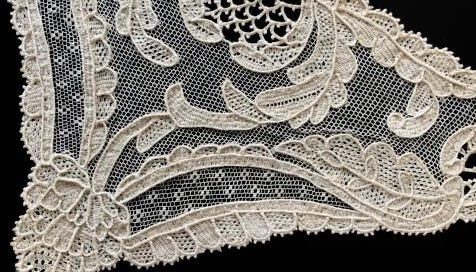



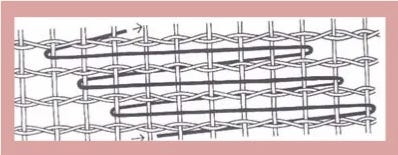

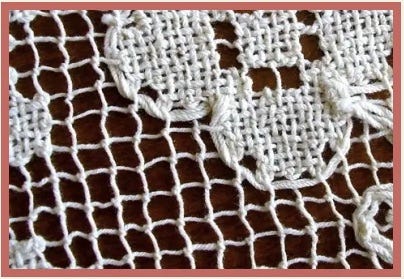
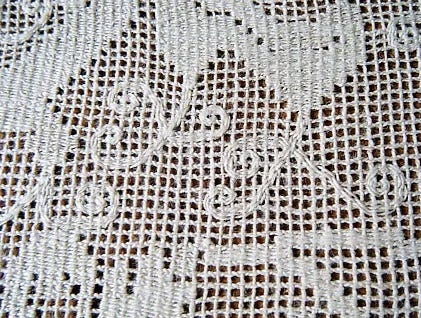



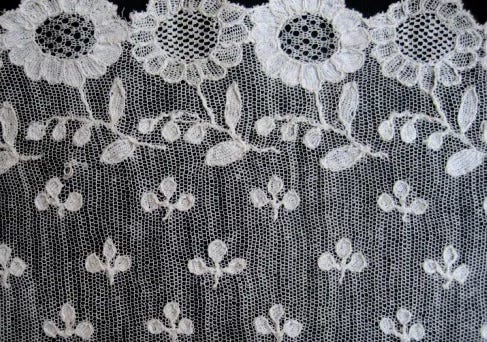
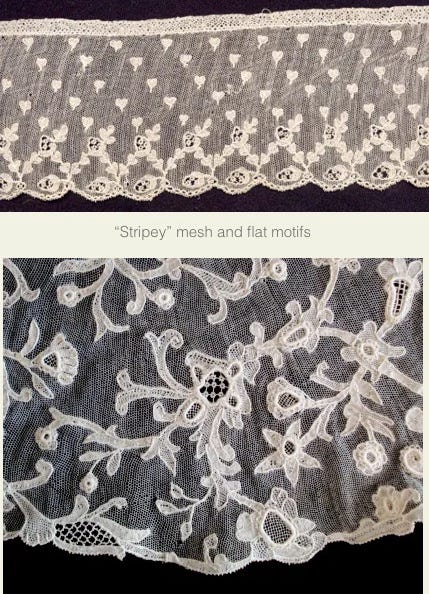

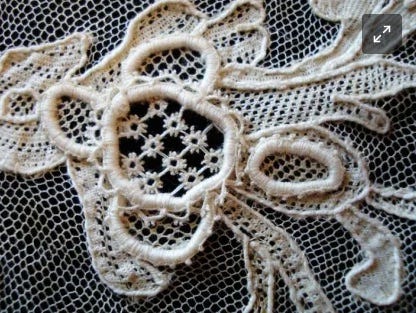
WEll done Grasshopper ))))